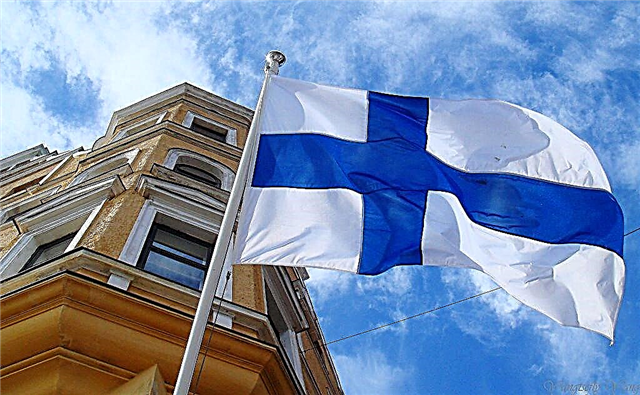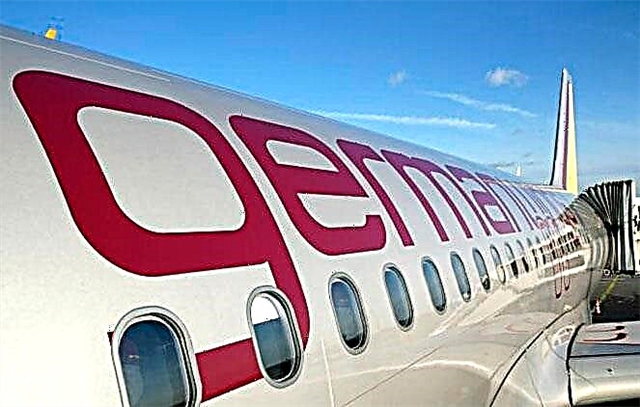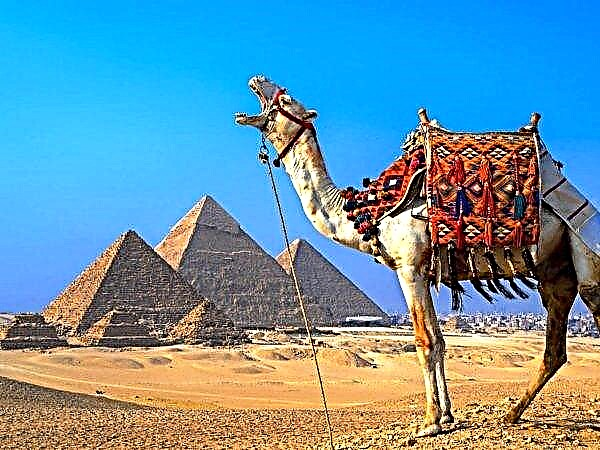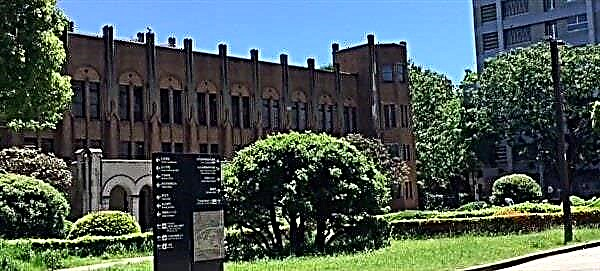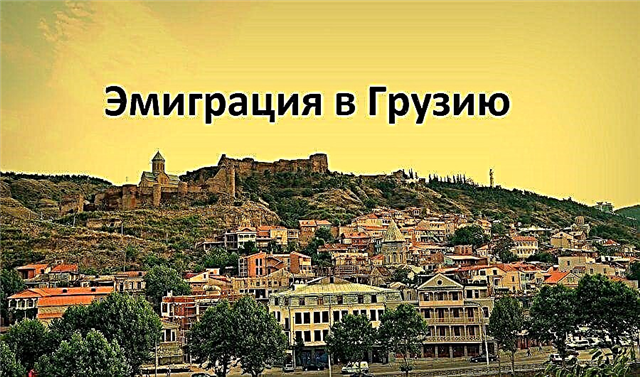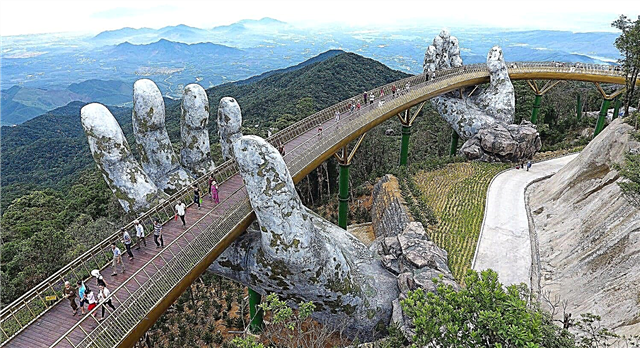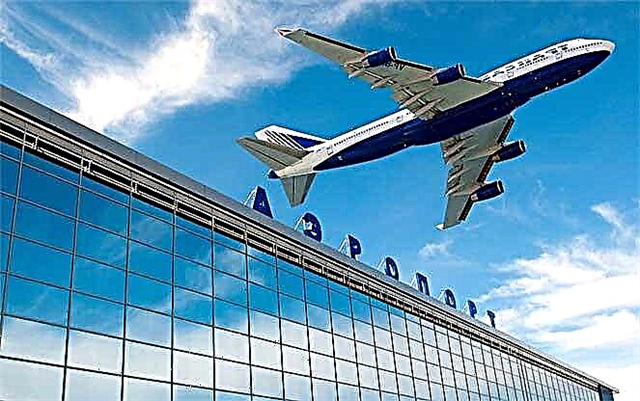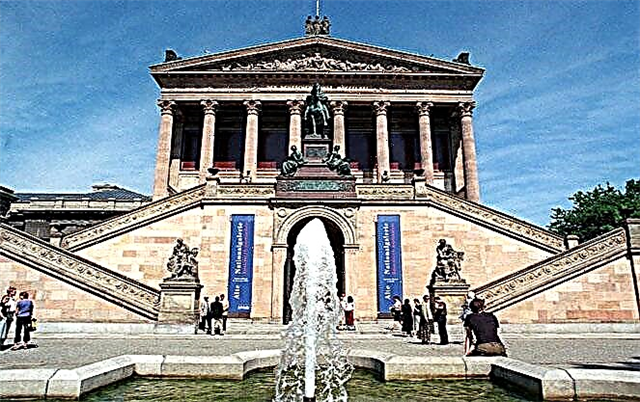Connoisseurs and connoisseurs of classical fine art should definitely visit the Nationalgalerie in Berlin. The National Gallery has existed in the capital of Germany for 157 years, presenting a unique collection of art works of the 19th and 21st centuries. Today the entire collection is housed in 5 buildings, separating art objects from different centuries. Art of the 19th century, including masterpieces of such famous artists as Adolph von Menzel, Edouard Manet, Claude Monet, are collected in the Old National Gallery on the Museum Island.

Museum Island in the center of Berlin
In the very center of Berlin, on the Spree River, there is a one-of-a-kind island that brings together 5 priceless museums of architecture and art. Museum Island or Museumsinsel is known all over the world and has been a UNESCO heritage site since 1999.

List of museums on the island:
- Bode Museum, Bode Museum - Byzantine exhibits, medieval sculptures, an art gallery, a coin cabinet are presented here /
- Pergamon, Pergamonmuseum Berlin, - objects of art of Ancient Greece, Ancient Rome, Western Asia, Islamic states.
- Old National Gallery, alte Nationagalerie - 19th century painting and sculpture.
- New Museum, Neues Museum - exposition of the Egyptian Museum.
- Old Museum, Altes Museum - collection of antique collection.
All objects are included in the association of the State Museums of Berlin and the Prussian Cultural Heritage Foundation.
In addition to museums on the island, you can visit the Berlin Cathedral or walk to the colonnade, where concerts or movie screenings are often held in summer.
Placement of funds of the National Gallery
During World War II, the building of the National Gallery was destroyed and the funds were evacuated. The collection was completely reunited after the end of the war and the unification of Germany. At the moment, all exhibits are divided according to the time of their production and are stored in separate buildings: the Old and New National Galleries, the Picture Gallery, the Bergtrun and Scharf-Gerstenberg Museum and the exposition of the Friedrichswerder Church.
Art objects of the XIII-XVIII centuries
Some of the Nationalgalerie canvases, painted before the 18th century, are in the Berlin Art Gallery. The building is located in the Kulturforum in the Tiergarten district.

Here are exhibited paintings by Bosch, Botticelli, Bruegel, Durer, Caravaggio, Cranach, Raphael, Rembrandt, Rubens, Titian. In total, there are over 3.5 thousand paintings, including German, Dutch, Flemish, Italian, Spanish, French and English paintings of different periods.
A separate building was built for the gallery as part of the Kulturforum. The rectangular, simple design is slightly pushed forward and rises above a small area.
The architecture of the building has a sense of proportion and the spirit of the styles of the Italian Renaissance and Prussian classicism. Inside there is a spacious foyer in the center, two rows of columns, glass domes and a fountain.
Horseshoe contains 72 exhibition halls on 2 floors. Another 12 rooms are located on the basement floor. The total area is 7 thousand sq. m.
19th century paintings
Paintings and sculptures created in the 19th century are kept in the buildings of the Old National Gallery and the Friedrichswerder Church.
The Old National Gallery or Alte Nationalgalerie is located on the Museum Island. It was from this building that the National Gallery began in the early 19th century, when the banker Johann Heinrich Wagner presented 262 paintings by German and foreign artists to it. At first, the paintings were placed in buildings belonging to the Academy of Arts.

The project of the building, which now houses the collection, was developed by F. Stühler in 1865 based on the sketches of the King of Prussia Friedrich Wilhelm IV. The structure itself is similar to a Roman temple with an apse. The building was completely renovated in the 2000s, additional halls were opened for exhibits of the Romantic era, and in 2021 the Colonnade Courtyard opened in front of the main entrance to the gallery.
Here are exhibited canvases by world-famous artists representing such areas as:
- classicism and romanticism - Karl Blechen, Karl Friedrich Schinkel, Caspar David Friedrich;
- Biedermeier - Ferdinand Georg Waldmüller;
- impressionism - Edouard Manet, Paul Cezanne, Claude Monet;
- early modernism - Max Liebermann, Adolph von Menzel, Lovis Corinth.
The canvases of such masters of genre painting as Johann Peter Gazenklever and August Lebrecht Amberg are impressive.
The branch of the Nationalgalerie in Friedrichswerder Church includes sculptures by masters from the 19th century. The most famous works of German classicists:
- sculptural group of marble from 1796-1797 "Crown Princess Louise and Princess Frederica" by Johann Gottfried Shadov;
- marble sarcophagus of Queen Louise of Prussia by sculptor Christian Daniel Rauch.
In addition, there is an exhibition of Schinkel's works, under whose leadership the church building was erected in 1824-1831.
Collections of classic modernism of the 20th century
The new national gallery, Neue Nationalgalerie in German, is also part of the Kulturforum. The spacious, elegant building is an impressive concrete and glass project by the famed German modernist architect Ludwig Mies van der Rohe.
According to the artist's idea, the building of the New Gallery is a modern embodiment of an ancient temple, in the solutions of which the romantic architectural traditions of Friedrich Schinkel and his school are clearly traced.
The exposition is represented by the works of artists and sculptors who worked in the XX century: Picasso, Munch, Dicke, Ernest, Lieberman. From stylistic directions: early modernism, surrealism, expressionism, pop art and others. The sculptures are collected in the park in the west wing of the building.

The Berggrun collection or museum can be found in the Charlottenburg area. The gem of the collection is more than 100 paintings by the inimitable Pablo Picasso from the age of 16 to later works. The famous "Houses on the Hill" and "Nu jaune" can be seen with your own eyes in the Bergruhn Museum. Other eminent artists exhibited here include the German avant-garde artist Paul Klee, Henri Matisse, Alberto Giacometti, Cezanne.
In the same area as the Bergrün Museum, directly opposite Charlottenburg Palace, there is a private collection of Scharf-Gerstenberg's paintings and sculptures. The exposition includes 250 works of the eras of romanticism, symbolism, surrealism.
Famous artists - Piranesi, Goya, Magritte, Ernst, Bellmer, Dali, Dubuffet, Munch, Picasso - make viewers feel all possible emotions, from alertness and depression to amazement and excitement.
Works of the XXI century at the Museum of Modern Art
The Museum of Modern Art in Berlin is located in the building of the former Hamburg Station. The premise was specially renovated to house a collection of art objects and was inaugurated in 1996.

From the Berlin Nationalgalerie Foundation, here are the canvases of German postmodern artists: Joseph Beuys, Anselm Kiefer, American pop art representative Roy Lichtenstein, British avant-garde artist Richard Long, American painters Andy Warhol and Cy Twombly.
The highlights of the exposition are “Ways of the World's Wisdom: Battles of the Germans” by A. Kiefer, as well as his cycle of photographs “Occupation”; portrait of Mao E. Warhol.
Visit to the Old and New National Galleries in Berlin
The most popular among guests of Berlin are the Old and New National Galleries, despite the fact that they are located in completely different areas of the city. A visit to these branches of the Nationalgalerie allows you to enjoy paintings by authors from the 19th century, as well as by more contemporary artists.
Features of expositions
In the Old National Gallery, one room is entirely dedicated to the Impressionists. Visitors can personally enjoy the legendary paintings of O. Renoir - "Children's Day in Wargemont", "Summer", "Blooming Chestnut"; NS.Cezanne - "The Mill at Pontoise", "Still Life with Flowers and Fruits"; K. Monet - "Summer", "Saint-Germain"; O. Daumier "Don Quixote and Sancho Panza". In addition, the exhibition includes paintings by A. Menzel, A. Rodin, A. Beklin, sculptures by the architect F. Stüler, A. Canova, G. Courbet.

The New Gallery exhibits works of European painters and sculptors of the eras of classical modernism up to the 60s of the XX century. Here you can see:
- emotionally shocking paintings by the German expressionist artist Otto Dix, for example, his work "The Skat Players";
- caricature paintings by Georg Gross, a German painter, for example, the canvas "Pillars of Society";
- original, vivid, dramatic landscapes by Ernst Ludwig Kirchner, the founder of Expressionism at the beginning of the 20th century, in particular “Postdam Square, Berlin”.
Among other famous works: "Who's Afraid of Red, Yellow and Blue IV", written by the American abstract artist B. Newman, "The frieze of life" by the Norwegian expressionist E. Munch, works by avant-garde artists P. Klee, V. Kandinsky, E. Heckel, portraitist M. Beckmann, surrealists Dali, Miro, Ernst.
Travel Tips
Since 2021, the New National Gallery has been undergoing renovation. In general, to get to Kulturforum, you need to get to Potsdamer Platz: by metro - line U2, by city train - S1, S2, S25, or by bus М41.
The old gallery is open 5 days a week, Monday is a day off. Opening hours - from 10:00 to 20:00 on Thursday, and until 18:00 on other days. Ticket price - 10 euros, children and concessions - 5 euros. You can buy tickets in advance - on the website of the State Museums of Berlin.
You can purchase a card that allows you to visit all 5 museums of the island at once: 18 euros for the full cost, 9 euros for beneficiaries.
The Alte Nationalgalerie can be reached by metro, city train or tram. In the first or second cases, you need to go to the Friedrichstraße station, by the way, bus number 147 goes here.
By tram we get like this: М1 or М12 to the Am Kupfergraden stop, then М4, М5, М6 - to Hackescher Markt. You can walk from the Brandenburg Gate to the island - it will take no more than 15 minutes.
Finally
The richest collection of paintings and sculptures is kept in the funds of the National Gallery in Berlin. There are works by masters who worked even before the 18th century, as well as more modern works.
The exhibits are distributed in 5 collections, which are located in different buildings in the city. A significant part of the works of art is located in the Alte Nationalgalerie - on the Museum Island, and the Neue Nationalgalerie - on the territory of the Kulturforum. Anyone can visit exhibitions and get an unforgettable experience for only 10 euros.

